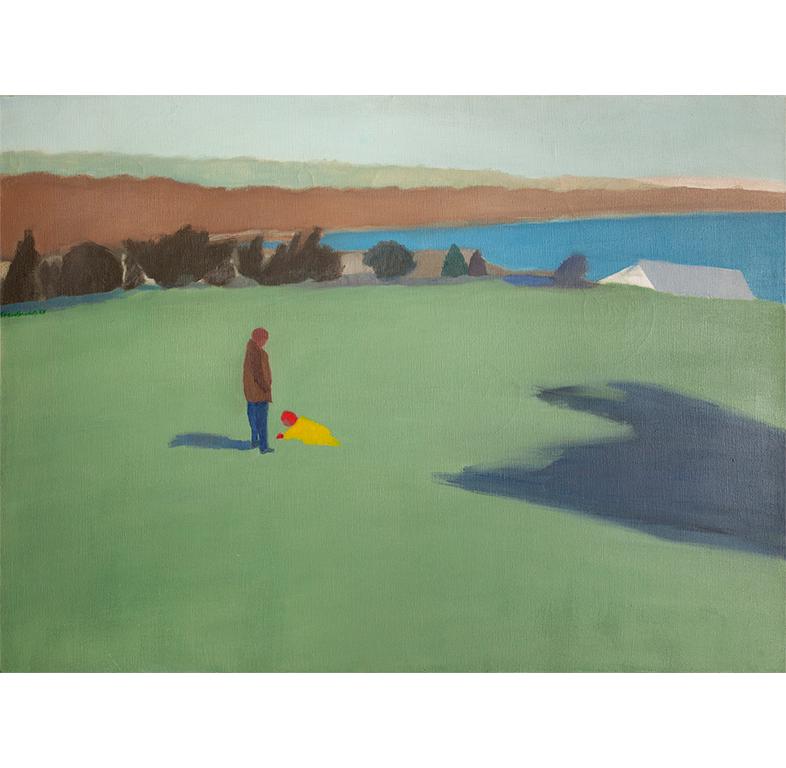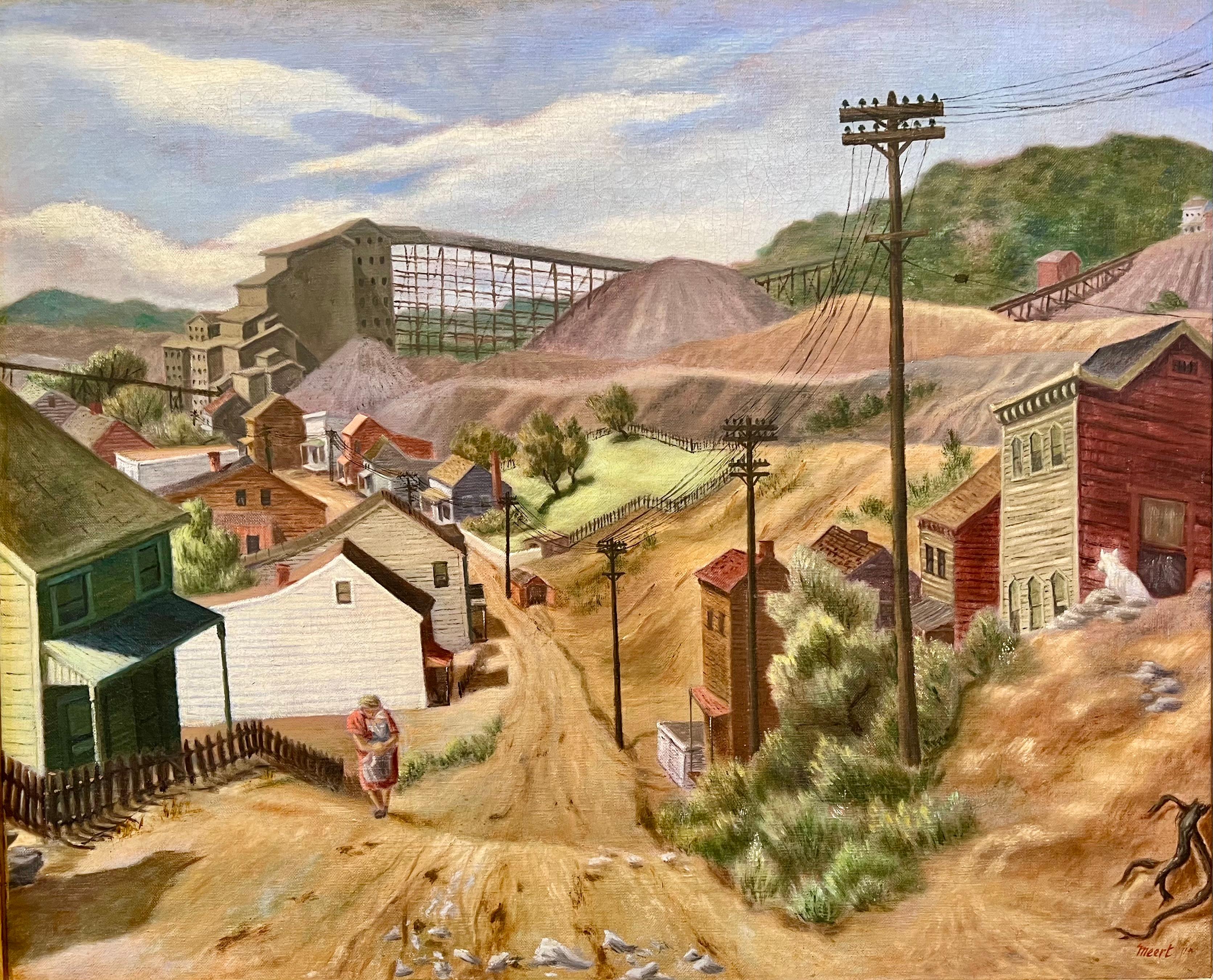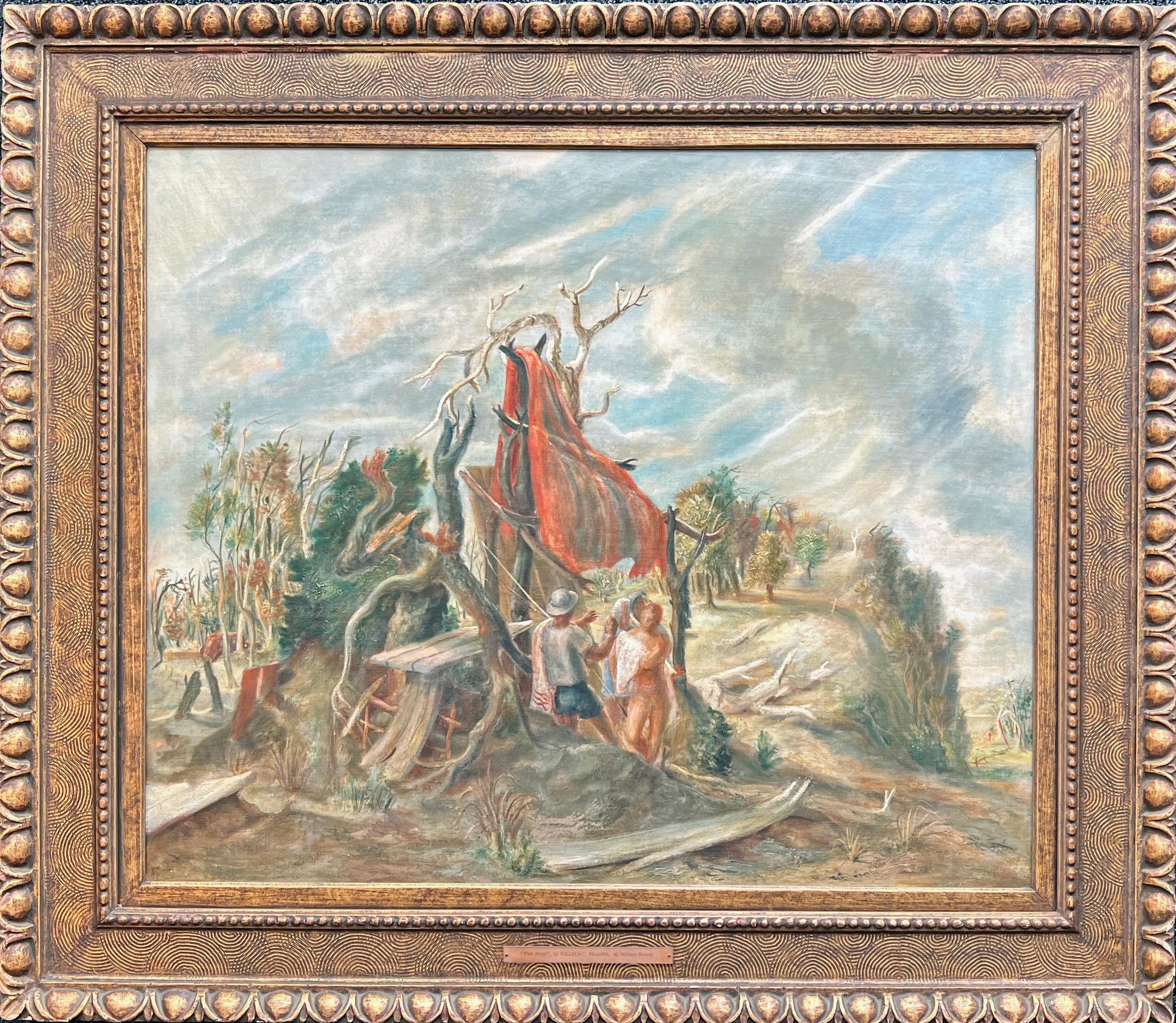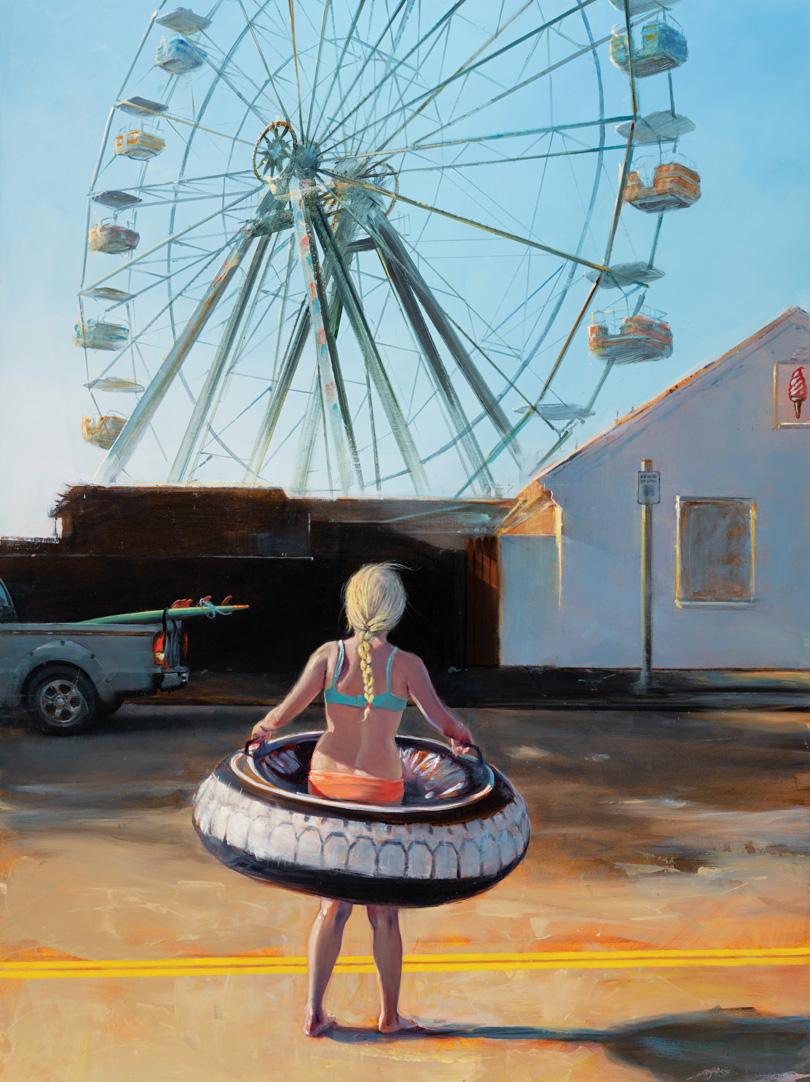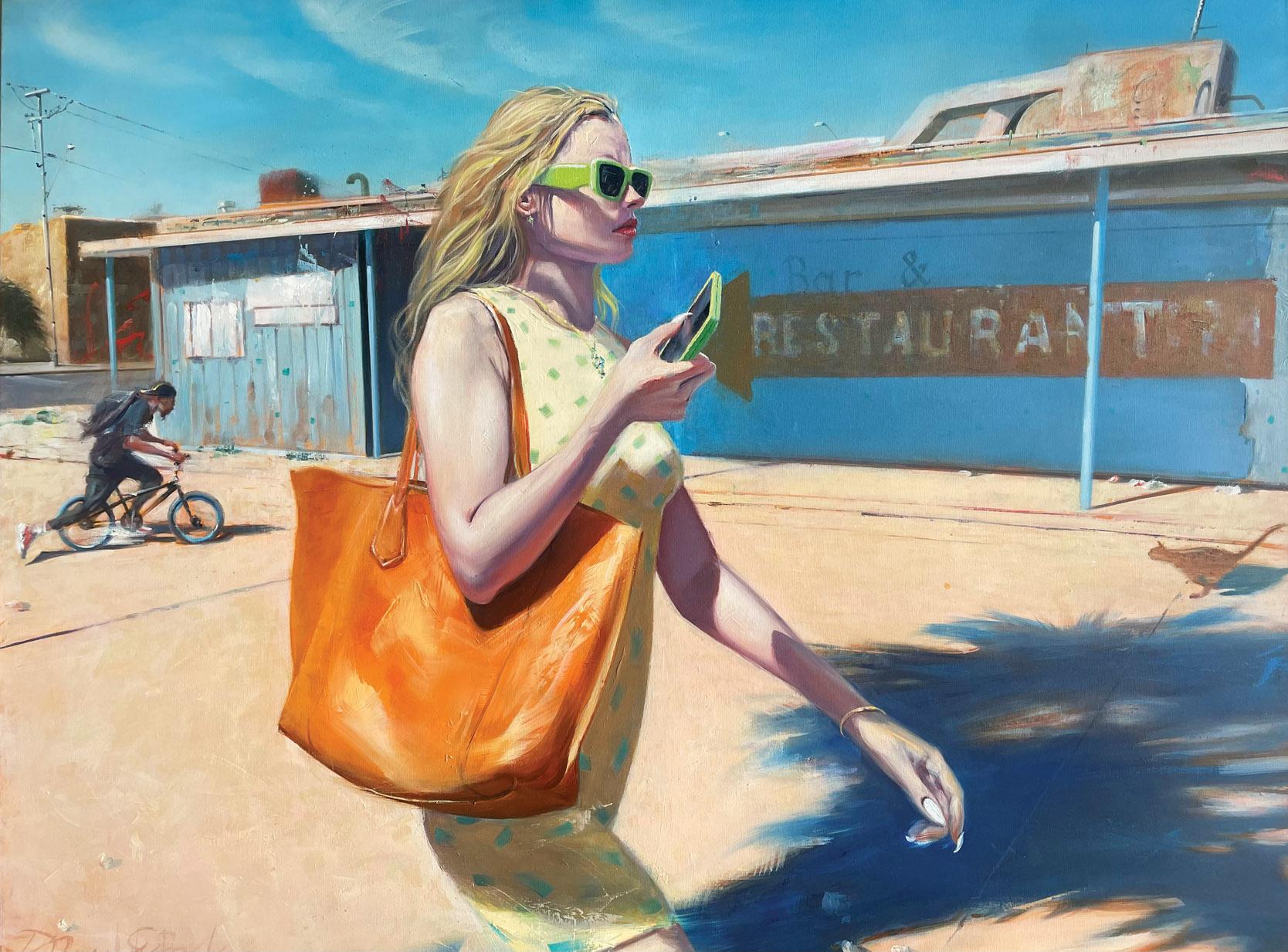Items Similar to Early 20th Century Summer Landscape, Cleveland School Artist
Want more images or videos?
Request additional images or videos from the seller
1 of 9
George AdomeitEarly 20th Century Summer Landscape, Cleveland School Artist
About the Item
George Gustav Adomeit (American, 1879-1967)
Summer Landscape
Oil on canvas board
Signed lower right
13 x 14.25 inches
18.25 x 19.5 inches, framed
A major painter of American scene subjects, George Adomeit was born in Memel, Germany, and came to Cleveland at the age of four with his family. Encouraged by his family, he set up a drawing studio in his home at the age of eight. Adomeit took art lessons throughout his high school years and, after winning a full scholarship to the Cleveland School of Art, chose instead a three-year apprenticeship in lithography. He was the cofounder of the Caxton Company, an engraving and commercial art firm that gained national acclaim.
Adomeit's talent for drawing led him to formal training at the Cleveland School of Art, where he graduated in 1911. His first exhibition was of work done outdoors in Zoar, Ohio, a popular plein air painting locale for artists interested in rural subject matter. His imagery was inspired by many other locations, including the Cleveland area and vacation spots such as Cape Cod, Monhegan Island off the coast of Maine, and sites in Mexico, Canada and Brazil.
Adomeit gained a national reputation by showing in exhibitions at the Pennsylvania Academy of Fine Arts, the Toledo Museum of Art, the Corcoran Gallery of Art, and many museums in the East and Midwest. After his retirement from the Caxton Company in 1956, Adomeit continued to travel, paint and exhibit.
- Creator:George Adomeit (1879 - 1967, American)
- Dimensions:Height: 18.25 in (46.36 cm)Width: 19.5 in (49.53 cm)
- Medium:
- Movement & Style:
- Period:
- Condition:
- Gallery Location:Beachwood, OH
- Reference Number:1stDibs: LU1768213760752
About the Seller
No Reviews Yet
Vetted Seller
These experienced sellers undergo a comprehensive evaluation by our team of in-house experts.
Established in 1975
1stDibs seller since 2022
9 sales on 1stDibs
Typical response time: 10 hours
- ShippingRetrieving quote...Ships From: Beachwood, OH
- Return PolicyA return for this item may be initiated within 14 days of delivery.
More From This SellerView All
- Boothbay Harbor, Maine Dock Seascape, Early 20th Century, Cleveland SchoolBy George AdomeitLocated in Beachwood, OHGeorge Gustav Adomeit (American, 1879-1967) Boothbay Harbor, 1924 Oil on canvas Signed lower right 15 x 17 inches 20.25 x 22.25 inches, framed A major painter of American scene subj...Category
1920s American Modern Figurative Paintings
MaterialsOil
- Riders Through the Canyon, Mid-Century Western LandscapeBy Frank WilcoxLocated in Beachwood, OHRiders Through the Canyon, c. 1941 Oil on board Signed lower right 24 x 32.25 inches "Also, on this second trip the significant colors of the Southwest became apparent - the prep...Category
1940s American Modern Landscape Paintings
MaterialsOil
- Coastal Scene, 20th Century Seascape, Cleveland School ArtistBy George AdomeitLocated in Beachwood, OHGeorge Gustav Adomeit (American, 1879-1967) Coastal Scene Oil on canvas Signed lower left 19 x 23 inches 21.5 x 25.5 inches, framed A major painter of American scene subjects, Georg...Category
20th Century American Modern Figurative Paintings
MaterialsOil
- Ohio Countryside, 20th century farm landscape, Cleveland School ArtistBy George AdomeitLocated in Beachwood, OHGeorge Gustav Adomeit (American, 1879-1967) Ohio Countryside Oil on artist's board 16 x 20 inches 21.5 x 25.5 inches, framed A major painter of American scene subjects, George Adome...Category
20th Century American Modern Figurative Paintings
MaterialsOil
- Mid Century Modernist Watercolor Landscape with Horse, Cleveland SchoolBy William SommerLocated in Beachwood, OHWilliam Sommer (American, 1867–1949) Spring Beauty Watercolor on paper Signed lower right 12.5 x 17 inches 18 x 22.75 inches, framed William Sommer is seen as a key person in bringi...Category
Mid-20th Century American Modern Figurative Paintings
MaterialsWatercolor
- Hillside and Stream, early 20th century modernist Cleveland School paintingLocated in Beachwood, OHClara Deike (American, 1881-1964) Hillside and Stream, 1916 Gouache on paper Signed and dated lower right 22 x 18 inches 25.5 x 21.5 inches, framed A graduate of the Cleveland Schoo...Category
1910s American Modern Figurative Paintings
MaterialsGouache
You May Also Like
- Southdown Field at Long Island Sound Beach Parent and childBy Stan BrodskyLocated in Brookville, NYThis large green field overlooking the Long Island Sound Beach depicts a parent without definition, mother or father, observing their child in the gr...Category
1960s American Modern Figurative Paintings
MaterialsOil
- Six O'ClockLocated in Los Angeles, CASix O-Clock, c. 1942, oil on canvas, 30 x 20 inches, signed and titled several times verso of frame and stretcher (perhaps by another hand), marked “Rehn” several times on frame (for the Frank K. M. Rehn Galleries in New York City, who represented Craig at the time); Exhibited: 1) 18th Biennial Exhibition of Contemporary American Oil Paintings from March 21 to May 2, 1943 at The Corcoran Gallery of Art in Washington, D.C. #87, original price $450 (per catalog) (exhibition label verso), 2) Craig’s one-man show at the Frank K. M. Rehn Galleries, New York City, from October 26 to November 14, 1942, #10 (original price listed as $350); and 3) Exhibition of thirty paintings sponsored by the Harrisburg Art Association at the State Museum of Pennsylvania in Harrisburg in March, 1944 (concerning this exhibit, Penelope Redd of The Evening News (Harrisburg, Pennsylvania) wrote: “Other paintings that have overtones of superrealism inherent in the subjects include Tom Craig’s California nocturne, ‘Six O’Clock,’ two figures moving through the twilight . . . .” March 6, 1944, p. 13); another label verso from The Museum of Art of Toledo (Ohio): original frame: Provenance includes George Stern Gallery, Los Angeles, CA About the Painting Long before Chris Burden’s iconic installation outside of the Los Angeles County Museum of Art, Urban Light, another artist, Tom Craig, made Southern California streetlights the subject of one of his early 1940s paintings. Consisting of dozens of recycled streetlights from the 1920s and 1930s forming a classical colonnade at the museum’s entrance, Burden’s Urban Light has become a symbol of Los Angeles. For Burden, the streetlights represent what constitutes an advanced society, something “safe after dark and beautiful to behold.” It seems that Craig is playing on the same theme in Six O-Clock. Although we see two hunched figures trudging along the sidewalk at the end of a long day, the real stars of this painting are the streetlights which brighten the twilight and silhouette another iconic symbol of Los Angeles, the palm trees in the distance. Mountains in the background and the distant view of a suburban neighborhood join the streetlights and palm trees as classic subject matter for a California Scene painting, but Craig gives us a twist by depicting the scene not as a sun-drenched natural expanse. Rather, Craig uses thin layers of oil paint, mimicking the watercolor technique for which he is most famous, to show us the twinkling beauty of manmade light and the safety it affords. Although Southern California is a land of natural wonders, the interventions of humanity are already everywhere in Los Angeles and as one critic noted, the resulting painting has an air of “superrealism.” About the Artist Thomas Theodore Craig was a well-known fixture in the Southern California art scene. He was born in Upland California. Craig graduated with a degree in botany from Pomona College and studied painting at Pamona and the Chouinard Art School with Stanton MacDonald-Wright and Barse Miller among others. He became close friends with fellow artist Milford Zornes...Category
1940s American Modern Landscape Paintings
MaterialsCanvas, Oil
- Gold Mine, Central City, ColoradoBy Joseph MeertLocated in Los Angeles, CAThis painting is part of our exhibition America Coast to Coast: Artists of the 1930s Goldmine, Central City, Colorado, oil on canvas, 36 x 28 inches, c. 1936, signed lower right, ex collection of Platt Fine Art, Chicago, Illinois (label verso). About the Painting Joseph Meert’s painting, Goldmine, Central City, Colorado, depicts the short-lived resurrection of a once prominent city just outside Denver. Central City was founded in 1859 soon after John Gregory struck gold in the area. As word spread, thousands of miners converged into “Gregory’s Gulch” and its surroundings became known as the “richest square mile on earth.” Mining production quickly increased resulting in Central City to becoming Colorado’s largest city in the early 1860s. Despite some technical difficulties transitioning to lode mining and the rise of competition from Leadville, Central City remained an economic boom town through the turn of the century. But, with every boom, there is a bust. World War I marked the end of Central City’s prominence as ore production ground to a halt and by 1925, the town’s population shrank to only 400 people. The desperation of the Great Depression and a nearly 100% increase in the price of gold lured labor and capital back to Central City. Meert painted in Colorado during the mid-1930s, a time when he created his most desirable works. It is during this period of renaissance that Meert captures one of Central City's outlying dirt streets bordered by 19th century wooden houses from the town's heyday and the more recently installed electric lines leading to a distant gold mine. A lone figure trudges up the hill, a mother with a baby in her arms, putting us in mind of the rebirth of the town itself. Meert had solo exhibitions at the Colorado Springs Fine Arts Center in 1936 and the Denver Art Museum. Although it is not known whether Goldmine, Central City was included in either of these exhibitions, it seems likely. Moreover, the painting is closely related to Meert’s painting, The Old Road, which was painted in 1936 and exhibited at the Corcoran Gallery of Art in Washington, DC and at the Dallas Museum of Art. About the Artist Joseph Meert was a well-regarded painter and muralist, who initially made a name for himself in the American Scene and later as an abstract expressionist. Although initially successful, Meert struggled financially and with mental illness later in life. He was born in Brussels, Belgium, but moved with his family to Kansas City, Missouri. As a child, a chance encounter at the Union Pacific Railyard changed his life. Meert happened upon a worker repainting and stenciling a design on a railroad car. Meert later recalled that this experience introduced him to the idea of being a painter. Without support from his father, Meert obtained a working scholarship to the Kansas City Art Institute. After four years at the Kansas City Art Institute, Meert studied seven years at the Art Students League and in Europe and Los Angeles. At the Art Students League, Meert fell under the spell of Thomas Hart Benton and Stanton MacDonald-Wright. In 1931, he befriended Jackson Pollock. By 1934, Meert was part of the Public Works of Art Project when he met his wife, Margaret Mullin...Category
1930s American Modern Landscape Paintings
MaterialsCanvas, Oil
- Fish Story oil painting by Williams Charles PalmerLocated in Hudson, NYThis painting is illustrated in the Catalogue of the 1945 Encyclopedia Britannica Collection of Contemporary American Painting, p.84. Written and edited by Grace Pagano. "Painting ...Category
Mid-20th Century American Modern Figurative Paintings
MaterialsOil, Canvas
- Still/LifeBy David FeBlandLocated in Scottsdale, AZDavid Febland is a prominent American artist working today. He pulls together imagery from his travels and composes them in a scene that is full of movement. The work is imbued wit...Category
2010s American Modern Figurative Paintings
MaterialsOil
- HomebodyBy David FeBlandLocated in Scottsdale, AZFebland creates wonderfully dynamic technical and dramatic narratives. The works are evocative of many places in America(especially that of his newer works which seem to sew-togethe...Category
2010s American Modern Landscape Paintings
MaterialsOil
Recently Viewed
View AllMore Ways To Browse
Maurizio Massi
Venice Series
Old Art Child Painting
Jean Hillion
Local Hero
Duncan Ross
J Ross Spanish Painter
Paul Schilling
Chateau Provence
Large Oil Painting Egypt
Large Nude Oil Painting
Framed Painting Piano
Original Lithograph La Collation
Renoir Original Lithograph La Collation
Cluny Cafe
A Painting Of A Man
Asian Sea Shell Painting
Miroir Cheminee
